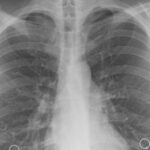Learn how to track CJC 1295 Ipamorelin treatment success through essential biomarkers, lab tests, and progress monitoring methods.
Starting cjc 1295 ipamorelin therapy feels like stepping into uncharted territory. You want results, but how do you know if it’s actually working?
The answer lies in proper tracking through specific biomarkers and lab tests that show real progress.
Key Biomarkers That Show Real Progress
Your body sends clear signals when growth hormone therapy starts working. IGF-1 levels serve as the primary indicator of treatment effectiveness. This protein increases when your growth hormone production improves, typically rising within 2-4 weeks of starting therapy.
Growth hormone levels themselves fluctuate throughout the day, making them trickier to measure. Your doctor will likely test these during peak production times, usually in the morning or after exercise.
Body composition changes become visible through DEXA scan results. These scans measure bone density, muscle mass, and fat distribution with remarkable accuracy. You should see measurable improvements in lean muscle mass within 3-6 months of consistent treatment.
Essential Laboratory Tests You Need
Regular blood work forms the foundation of effective monitoring. Here’s what your lab panel should include:
| Test Category | Specific Markers | Testing Frequency |
| Hormone Levels | IGF-1, Growth Hormone, Testosterone | Every 3 months |
| Metabolic Health | Glucose, HbA1c, Lipid Panel | Every 6 months |
Thyroid function tests matter more than most people realize. Growth hormone therapy can affect thyroid hormone levels, so monitoring TSH, T3, and T4 becomes crucial for optimal results.
Liver function markers like ALT and AST help ensure your body processes the peptides safely. These enzymes can temporarily increase during treatment, but significant elevations require attention.
Blood sugar monitoring takes on new importance during therapy. Growth hormone can affect insulin sensitivity, so tracking fasting glucose and HbA1c levels every few months helps prevent metabolic complications.

Physical Assessment Methods That Work
Numbers on a scale don’t tell the complete story. Body composition analysis using bioelectrical impedance or DEXA scans provides accurate measurements of muscle gain and fat loss.
Strength testing offers practical insights into treatment effectiveness. Track your performance in basic exercises like push-ups, squats, or resistance training. Improvements in strength often appear before visible muscle changes.
Energy levels and sleep quality serve as important subjective markers. Many patients report better sleep and increased daytime energy within the first month of treatment. Keep a simple daily log rating your energy from 1-10.
Skin texture and appearance changes become noticeable after 2-3 months. Increased collagen production from growth hormone therapy often results in firmer, more elastic skin.
Creating Your Monitoring Schedule
Successful tracking requires consistency and patience. Your monitoring timeline should look something like this:
Week 1-4: Establish baseline measurements including weight, body composition, energy levels, and initial blood work.
Month 2-3: First follow-up lab work focusing on IGF-1 levels and basic metabolic markers. This shows early treatment response.
Month 4-6: Comprehensive assessment including DEXA scan, complete blood panel, and physical performance testing.
Month 6+: Ongoing monitoring every 3-6 months depending on your response and doctor’s recommendations.
Red Flags and When to Adjust
Not all changes indicate positive progress. Excessive water retention or joint pain might signal dosing issues that need adjustment.
Blood sugar elevations beyond normal ranges require immediate attention. Some patients develop insulin resistance during treatment, especially at higher doses.
Persistent fatigue or mood changes after the first month could indicate hormonal imbalances that need correction.
Making Sense of Your Results
Understanding your test results helps you make informed decisions about continuing or modifying treatment. IGF-1 levels should increase gradually, typically reaching 200-400 ng/mL depending on your age and baseline levels.
Body composition improvements follow predictable patterns. Most people see 2-5 pounds of lean muscle gain and 3-8 pounds of fat loss within the first six months.
Energy improvements often appear before measurable physical changes. If you’re not feeling better after 6-8 weeks, dosage adjustments might be necessary.
Your cjc 1295 ipamorelin journey requires patience and systematic tracking. The biomarkers and tests outlined here give you concrete ways to measure progress beyond guesswork.
Work with your healthcare provider to establish a monitoring plan that fits your goals and timeline.











